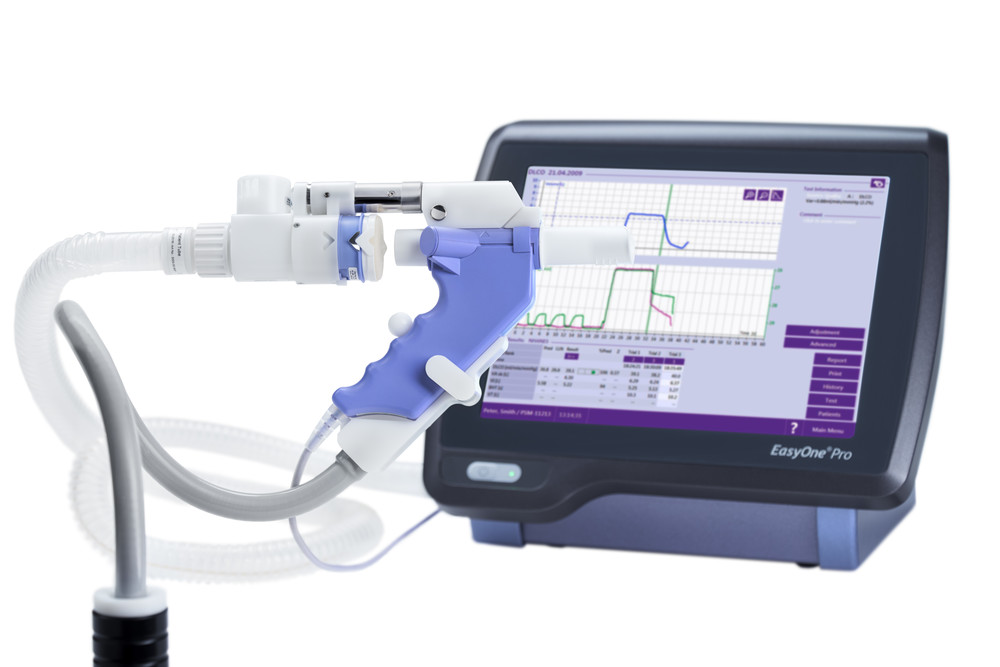What is a Spirometer?
A spirometer is a medical device used to measure lung function and capacity by determining the volume and rate of air that can be inhaled and exhaled by the lungs. Spirometry tests performed using a spirometer are important for diagnosing and monitoring respiratory conditions like asthma, chronic obstructive pulmonary disease (COPD), etc. In this article, we will learn more about what a spirometer is and how it works to evaluate lung health.
How does a Spirometer work?
A typical Spirometer Consists of a mouthpiece that is connected to either a piston, bellows or electronic transducer inside the device. When a patient exhales or inhales through the mouthpiece, it causes the piston inside to either move out or in, or activates the bellows or transducer. This movement is converted into data that can be used to calculate various lung function parameters.
During a spirometry test, the patient inhales as deep as possible first and then exhales forcefully and completely through the mouthpiece into the spirometer. Their deep breath in followed by fast breath out allows the device to measure the volume of air inhaled and exhaled over time. The air flow signal captured by the spirometer is displayed on a screen in the form of a graph called a spirometric flow-volume loop or curve.
Important Parameters Measured
Some key lung function measurements that can be obtained from spirometry include:
– Forced vital capacity (FVC) – Total amount of air that can be forcibly exhaled after taking the deepest breath possible.
– Forced expiratory volume in 1 second (FEV1) – Amount of air that can be forcibly blown out in the first second of exhaling.
– FEV1/FVC ratio – Used to detect obstructive vs restrictive lung diseases.
– Peak expiratory flow rate (PEFR) – Maximum speed of expiration achieved during forced breath out.
– Inspiratory capacity (IC) – Maximum volume of air inhaled after a normal expiration.
– Mid-expiratory flow rate (FEF25-75%) – Rate of airflow between 25-75% portion of FVC.
Types of Spirometers
The main types of spirometers used include:
– Peak flow meter – A simple device that measures PEFR only.
– Hand-held spirometer – Portable devices used in physician offices, containing electronic transducers.
– Desktop spirometer – Larger devices with more advanced software, often used in pulmonary function labs.
– Water-sealed spirometer – Works on the principle of measuring water displacement during breath maneuvers.
– Imaging spirometer – Uses x-rays or CT scans to produce images of airways during forced respiration.
Importance of Spirometry Testing
Spirometry plays a crucial role in accurately diagnosing and monitoring respiratory diseases. Some key benefits of spirometry include:
– Detection of conditions like asthma, COPD, cystic fibrosis at an early stage.
– Differentiation of obstructive vs restrictive or mixed pattern lung diseases.
– Evaluation of severity of disease and monitoring treatment effectiveness over time.
– Screening of high-risk individuals like smokers, those exposed to lung toxins.
– Guiding decisions regarding medications and other therapeutic interventions.
– Detection of complications like pneumonia in patients with existing lung illness.
– Pre-surgical assessment of pulmonary function in candidates for lung surgery.
Ensuring Spirometry Accuracy
For spirometry testing to provide reliable results, it is important to follow standard guidelines and quality control measures. Some factors influencing testing accuracy include:
– Using calibrated equipment that is regularly maintained and meets acceptability and repeatability criteria.
– Performing maneuvers correctly per American Thoracic Society (ATS) guidelines.
– Using proper techniques like patient posture, nose clips and maximal forced efforts.
– Interpreting results in view of reference values based on patient age, height, gender and ethnicity.
– Reviewing flow-volume and flow-time curves visually for anomalies that could affect interpretation.
– Performing repeat tests if initial ones are incomplete or faulty and using best results.
– Ensuring the tester is properly trained in using spirometry equipment and evaluating results.
Spirometry is a valuable, non-invasive and standardized procedure for objective assessment of lung health. When performed according to guidelines and quality standards, it provides reliable data to diagnose respiratory disorders early and guide appropriate management.
*Note:
1. Source: Coherent Market Insights, Public sources, Desk research
2. We have leveraged AI tools to mine information and compile it




